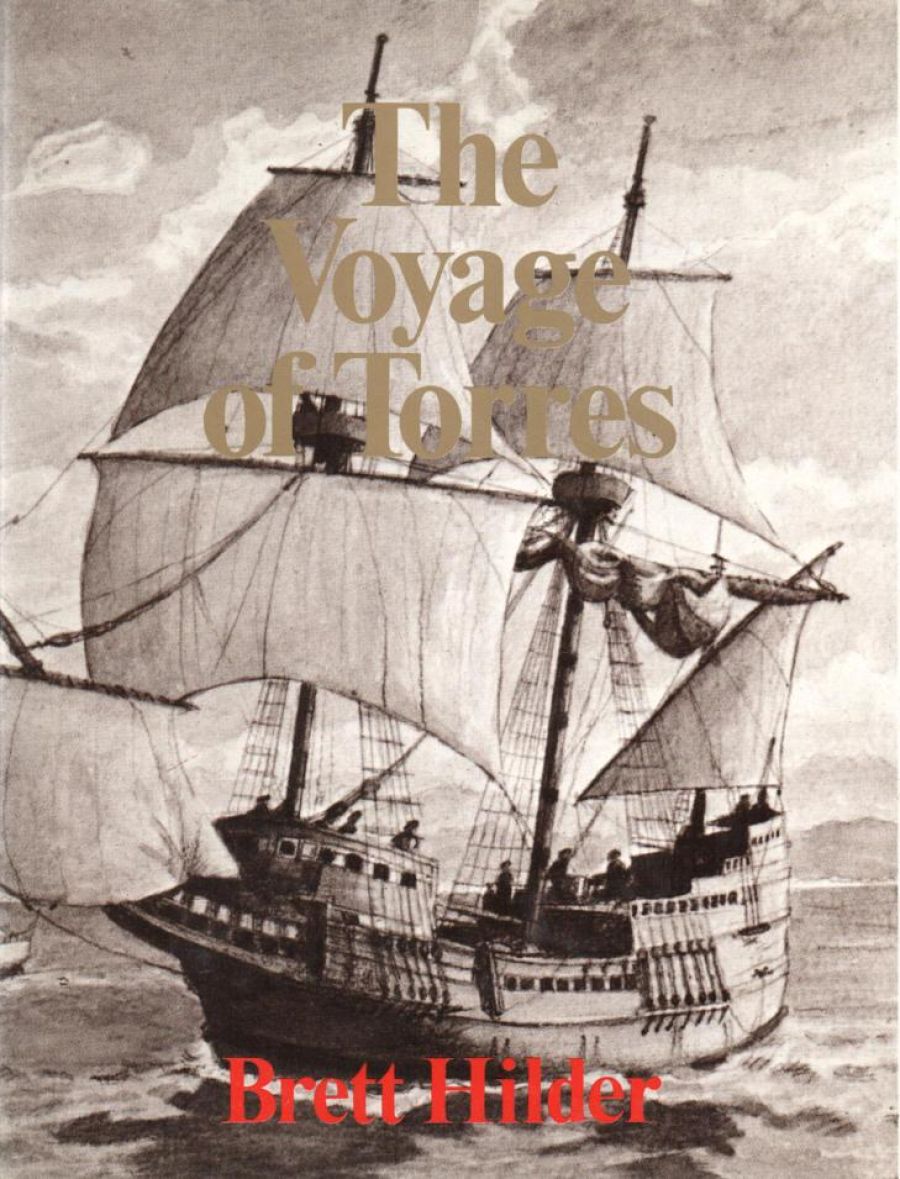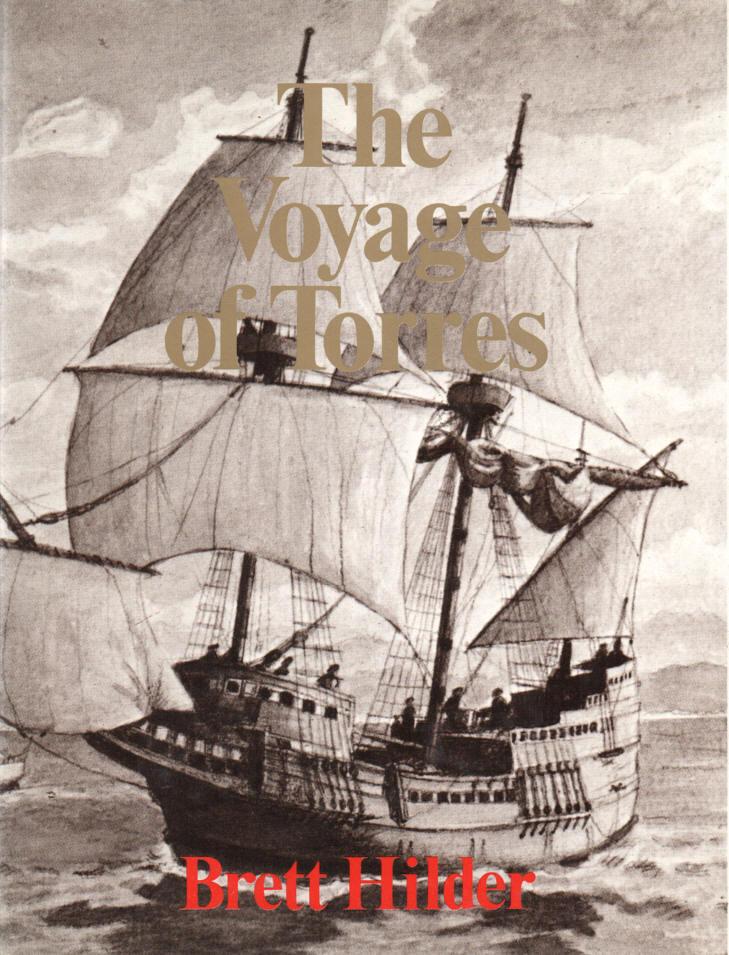
- Free Article: No
- Contents Category: Australian History
- Review Article: Yes
- Article Title: Search for a Southern Continent
- Online Only: No
- Custom Highlight Text:
Fifty years ago the sagas of maritime discovery were the monopoly of the historians; but today they have been taken over by the geographers, and especially by the practical geographers who themselves go down to the sea in ships. Australia is fortunate that its two major interpreters of the voyage of Torres – first Captain Francis Bayldon and now Captain Brett Hilder – are, or were, both blue-water navigators, with special experience of the waters that Torres crossed. Captain Hilder’s The Voyage of Torres is strictly the account of a voyage, and that voyage is analysed with consummate professional skill. The documents of Torres and Prado sufficiently supply the materials, but they are not materials which could be interpreted by an armchair theorist equipped with a school atlas. The guess-work distances sailed, the errors in the primitive observation of latitude, the absence of longitude, the crudeness of early cartography, the loss of some of the records – all of these produce conundrums which only an expert can solve. Earlier analysts, working over the same material, have come to different conclusions; but Captain Hilder’s comprehensive, scientific and authoritative analysis renders obsolete the conjectures of his predecessors, and settles for all time the details of the course sailed.
- Book 1 Title: The Voyage of Torres
- Book 1 Biblio: UQP, $17.95 pb, 194 pp
- Book 1 Cover Small (400 x 600):

- Book 1 Cover (800 x 1200):

The finding of this book that upsets the received wisdom of yesterday is that the route of Torres through the strait was much more to the south than previously accepted; and that in fact he passed through Cook’s Endeavour Strait, between Prince of Wales Island and the mainland. Granted this, many other details which previously had proved intractable suddenly fall into a coherent picture. From the maps and diagrams supplied, it seems impossible to disagree with the author; and the arguments presented in favour of this passage seem more cogent than anything to the contrary produced by Bayldon or Hinks.
The highlight of the story is Torres’s crossing of the Placel, that shallow tongue of reefs and shoals which almost joins Australia to New Guinea. The author knows the Placel both physically and emotionally, and he is with Torres in spirit as the ships battle their way through those dangerous waters. He finds evidence not only in the documents and in the maps, but in the winds and tides and currents, and in the shapes of the landmarks as viewed from the deck of a ship. The narrative not only follows Torres, but it verifies him as well.
But in spite of the navigational minutiae, so brilliantly analysed and so authoritatively expounded that a layman would not dare to disagree, it does seem that some of the wider historical questions relating to Torres and his voyage have been left unanswered. To start with, was Torres, as asserted, Spanish? Prado did not accept him as a clear-cut Spaniard – he thought he was Breton. His name is more Portuguese than Spanish, and there are Portuguese writers who claim him as their own.
Secondly, was Torres acquainted with the Portuguese conception of a Jave-la- Grande continent, as delineated in the Dieppe Maps? One of the official instructions for this voyage was to search for this Java Major. Prado’s lost maps, so convincingly reconstructed by Captain Hilder, show a ‘Java Major’ type continent pars cognita. The sailing directions envisage meeting the coast of the continent in Lat. 20°, and then sailing north-westerly along it, in the direction of Torres Strait. Captain Hilder only briefly mentions the Dieppe Maps, and does not examine these implications at all.
And thirdly, did Torres have prior knowledge of the existence of a strait between this continent and New Guinea? Queiros apparently did, for he had spoken knowingly to de Leza about a south side of New Guinea. But the maps which Prado carried showed the area as dry land, ‘the summit of the Antarctic Pole’, and in consequence Torres had instructions to sail for Manila through the waters north of New Guinea. His boat’s crew actually passed into these waters at Challis Head, and reported ‘that a vessel could go out to the east’. But Torres disobeyed his instructions, ignored this report, and sailed home along the south side of New Guinea. Why did he do this? It is a very interesting and most important question, and it is disappointing that this book does not raise the question and does not offer an answer.
The last historical question – did Torres actually sight the mainland of Australia? – is raised and answered by Captain Hilder, and the answer is affirmative. Because he finds that Torres passed through Endeavour Strait, he therefore finds that for three days Torres skirted the mainland of the Cape York peninsula. The navigational evidence seems unassailable, and we should accept that this book satisfactorily clears up this point, and closes a century of debate.
But from this firm navigational theorem there stems a disturbing corollary. Remember that the specific purpose of this expedition was to search for a southern continent. Queiros was ever ready, as in Espiritu Santo, to hail any large land mass that was not visibly insular as the fulfilment of this hope. Yet we learn here that Torres sailed for three days ‘in full view of the Australian coastline’ (Brett Hilder’s words) along this ‘island’ that had no end, without it occurring to him that this might be the long-sought continent. Great sailor though he was, a mistake of this magnitude would strip him of all claim to be a great explorer. Admirers of Torres would be happier if they could continue in the belief that he had not sighted the mainland at all.


Comments powered by CComment